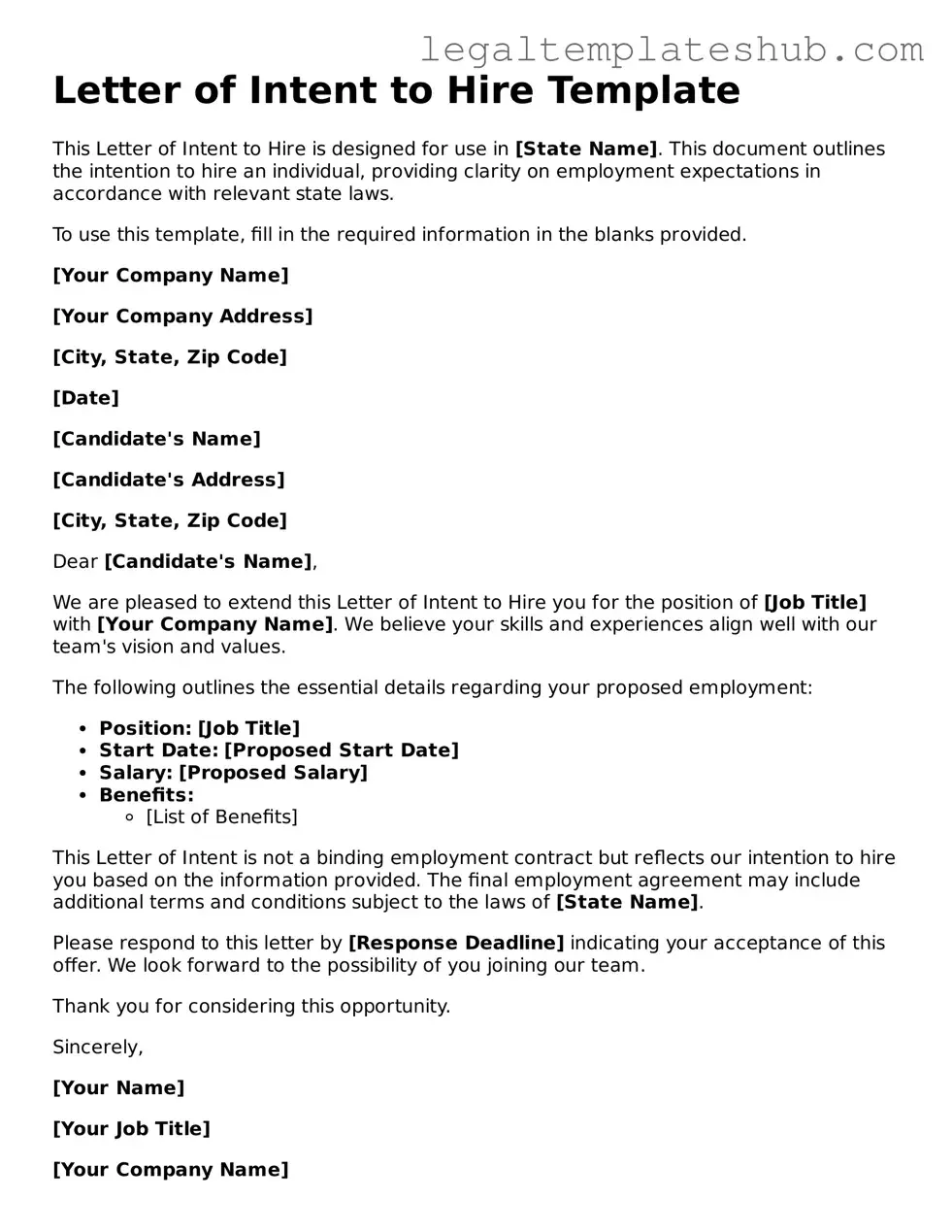Printable Letter of Intent to Hire Template
The Letter of Intent to Hire form serves as a preliminary agreement between an employer and a prospective employee, outlining the intention to offer employment under specific terms. This document typically includes details such as job title, salary, and start date, helping to clarify expectations for both parties. To ensure a smooth hiring process, consider filling out the form by clicking the button below.
Access Editor
